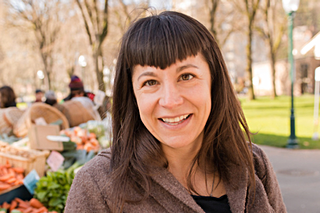
Podcast: Play in new window | Download (Duration: 10:05 — 8.5MB)
Subscribe: Google Podcasts | Spotify | Android | RSS | More
 James William Greenwood (that’s him on the left) was a pioneering investigative journalist of the high Victorian period. He broke some sensational stories, most notably by spending a night in the workhouse to document the appallingly squalid conditions of the poor in Victorian London. Greenwood, however, wasn’t above a bit of sensationalism and, perhaps, even a touch of fake news. For example, he was unable to supply any authentication for one of his most horrific pieces, about a fight between a man and a dog. Nor was he above telling more humdrum tales, including three little pieces about sausages – which he referred to as “Veiled Mysteries”.
James William Greenwood (that’s him on the left) was a pioneering investigative journalist of the high Victorian period. He broke some sensational stories, most notably by spending a night in the workhouse to document the appallingly squalid conditions of the poor in Victorian London. Greenwood, however, wasn’t above a bit of sensationalism and, perhaps, even a touch of fake news. For example, he was unable to supply any authentication for one of his most horrific pieces, about a fight between a man and a dog. Nor was he above telling more humdrum tales, including three little pieces about sausages – which he referred to as “Veiled Mysteries”.
One of them concerned a sausage scandal centred on Epping, just outside London. I first heard about it in Jan Davison’s wonderful book English Sausages. We talked a bit about that story in the podcast, and it stuck with me. Then I found myself in Epping, which in the middle of the 19th century was justly famous for its sausages. People in London sought them out, and they were often in short supply; ideal conditions for creating counterfeits, which were given an extra veil of authenticity by seeming to be delivered direct from Epping itself.
Back home, I looked for the original of Greenwood’s exposé, published in 1883. Although he refers to “an individual of an inquiring turn of mind” it turns out that this person was not Greenwood himself, but someone else who had exposed the crooked purveyors of Epping sausages in the 1850s. Greenwood merely retold the tale in his 1883 book Odd People In Odd Places, or The Great Residuum.
There are two more sausage stories in Greenwood’s book. I think I’ll save them for 2017.
Notes
- Jan Davison’s book English Sausages is published by Prospect Books.
- The text of Greenwood’s book is available online.
- There’s not a huge amount easily available on James Greenwood himself. Spartacus Educational, from whom I stole the picture of Greenwood, is an amazing resource. The Victorianist has adopted Greenwood’s nom-de-plume as his own, but does not appear to have considered the sausage scandals. I found a bit more in Secret Commissions: An Anthology of Victorian Investigative Journalism.
- I lifted the music from The Victorian Web. It is played by Professor Derek Scott.


 Truth be told, I’m not really big on huge international conferences. I’ve been to enough of them to know the score; lots of talk, lots of platitudes, lots of good intentions, lots of inertia. Despite all my prejudices, however, I dragged myself down to the Food and Agriculture Organization of the United Nations recently to witness for myself the International Symposium on Sustainable Food Systems for Healthy Diets and Improved Nutrition.
Truth be told, I’m not really big on huge international conferences. I’ve been to enough of them to know the score; lots of talk, lots of platitudes, lots of good intentions, lots of inertia. Despite all my prejudices, however, I dragged myself down to the Food and Agriculture Organization of the United Nations recently to witness for myself the International Symposium on Sustainable Food Systems for Healthy Diets and Improved Nutrition. 
 Many vegetables don’t taste of anything much these days, but whose fault is that, really? Plant breeders produce what growers want, and growers want what people will buy. So why aren’t people buying flavour? Mostly because they aren’t being offered a real choice. Lane Selman, who works on organic projects at Oregon State University, discovered that although organic growers say they want disease resistance, for example, they don’t actually grow existing disease-resistant varieties “because they taste terrible”. Lane enlisted a handful of chefs to taste some peppers that a local breeder was working with. From that quiet beginning has blossomed the Culinary Breeding Network, which aims to “bridge the gap between breeders and eaters to improve agricultural and culinary quality”.
Many vegetables don’t taste of anything much these days, but whose fault is that, really? Plant breeders produce what growers want, and growers want what people will buy. So why aren’t people buying flavour? Mostly because they aren’t being offered a real choice. Lane Selman, who works on organic projects at Oregon State University, discovered that although organic growers say they want disease resistance, for example, they don’t actually grow existing disease-resistant varieties “because they taste terrible”. Lane enlisted a handful of chefs to taste some peppers that a local breeder was working with. From that quiet beginning has blossomed the Culinary Breeding Network, which aims to “bridge the gap between breeders and eaters to improve agricultural and culinary quality”.